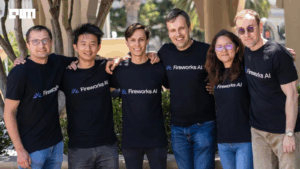Seattle-based startup TestSprite has raised $6.7 million in a seed round led by Trilogy Equity Partners, with participation from Techstars, Hat-Trick Capital, Jinqiu Capital, MiraclePlus, Baidu Ventures, and EdgeCase Capital Partners. The round brings total funding to $8.1 million.
The company builds an autonomous testing agent designed for the era of AI-generated code. Its platform reads product intent, generates test plans, executes front-end and back-end tests, diagnoses failures, and proposes fixes. The agent integrates into IDEs and continuous-integration environments through the Model Context Protocol (MCP), the same layer now used in developer tools such as Cursor, Windsurf, and Trae.
Building the validation layer for AI-written software
Co-founder and CEO Yunhao Jiao, a former Amazon Web Services engineer with a background in natural language processing at Yale, started TestSprite in 2024 to automate what he saw as the next bottleneck in software engineering: validation.
“We built TestSprite with one mission in mind: to make testing completely hands-off so devs can focus on what matters most, building great products,” Jiao said in an earlier Product Hunt comment.
At launch, TestSprite positioned itself as a developer-first tool, offering full-stack coverage and a natural-language interface. Users could watch tests execute visually, ask the agent to revise cases in plain English, and receive root-cause analysis for failing APIs. The company offered a free community version to drive early adoption.
Ten months later, the message has shifted toward infrastructure. The latest release TestSprite 2.0 introduces the MCP Server, which runs autonomously within CI pipelines and links directly with agentic code environments. The company now describes itself as “the testing backbone of the AI-native development era.”
According to the announcement, TestSprite’s user base grew 483 percent in one quarter, reaching 35,000 developers. The platform is reported to be in use across large technology firms, including Google, Apple, Adobe, Salesforce, ByteDance, Microsoft, and Meta Platforms.
The new capital will be used to expand engineering capacity and strengthen features in AI-powered test healing, intelligent monitoring, and support for teams executing thousands of code changes daily.
From AI-assisted code to AI-assured software
As generative tools become standard in development, the weakest link has shifted from writing code to validating it. TestSprite’s model automates the testing loop that typically follows every AI-assisted commit: generating cases, executing them, and proposing fixes.
Its system operates as an agent that “closes the loop with coding agents,” the company wrote on LinkedIn. That phrasing aligns TestSprite with a broader shift toward agentic software stacks, where multiple specialized agents cooperate, generation, validation, deployment, in continuous cycles.
In a press statement, Jiao said the goal is to make “AI-powered development dependable, observable, and enterprise-grade.”
The platform’s emphasis on observability echoes what has emerged across the AI-operations landscape. Like orchestration platforms such as NiCE AI Ops Center or Prefect, TestSprite positions reliability and traceability as core product values. Its testing agent is designed to function as both validator and monitor, running continuously within production workflows rather than in isolated QA stages.
The company’s early traction suggests demand for that approach. Developers increasingly rely on copilots and autonomous code assistants, but few equivalent tools exist to verify or debug what those agents produce. As Jiao put it in an interview earlier this year, “Writing code is no longer the hard part. The real challenge is ensuring it behaves exactly as intended.”
TestSprite’s claim of full autonomy sets a high technical bar. Competing platforms like Diffblue and Testsigma rely on varying degrees of human setup or rule-based scripting. TestSprite’s model, self-generating, self-diagnosing, self-correcting, pushes further, but it will face scrutiny on accuracy, edge-case handling, and integration depth.
The company’s trajectory mirrors that of many 2025-era AI-developer startups: community entry, agentic expansion, and enterprise framing. From its debut to its current funding stage, the language has shifted from “make testing easy” to “make AI-generated code trustworthy.”










